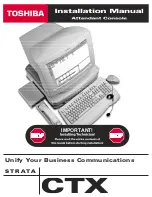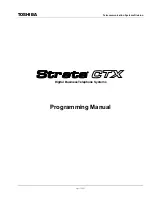
POWERING UP
With 9-Volt Battery (not included):
To install, simply
remove plastic battery door from bottom of unit to gain
access to battery compartment. For best results, use a high
quality alkaline battery.
NOTE: Battery engages when plug is inserted into the Input
jack. For longest life, always remove cable from Input when
not in use. To avoid damage from leakage, remove battery if
use is not planned for 30 days or more.
With Power Supply:
For AC operation, use a regulated
or unregulated 9-volt DC power supply with a 5.5 x 2.1 mm
plug.
Optional Tech 21 power supply is available:
Model #DC2.
Contact your local dealer or Tech 21.
CONNECTING AN INSTRUMENT
1. Connect a cable from the instrument to the Input jack.
2. Connect another cable from the Output jack to your
amplifier input jack. You can also connect the Output jack
to your effects pedals, and then to your amplifier.
Typical Wah Wah Connection:
-
+
Out: DC 9V 100mA
Negative Center
Tips:
1. Placing the wah before distortion will yield a traditional
“rock” wah tone. Placing the wah after distortion will give
you a very wide ranging “synth” type filtering effect.
2. The Killer Wail uses the same type of input impedance
as ‘60s wah pedals. Buffering your guitar’s pickups (with a
pedal that has electronic switching set to bypass) before
the wah will increase the range of the sweep. Note: active
pickups are already buffered.
3. Placing a very mild distortion before the wah, and more
distortion after the wah (from a pedal or amp) will result in
a very rich lead tone.
4. The inductor coil used in all wah pedals is capable of
picking up hum just as a single coil pickup does. Therefore,
placing the wah near a transformer may cause hum.
SELECTING A WAH WAH MODE
HIGH:
This position moves the
wah filter to the high range of the
guitar. Notes on the G, B, and E
strings will be accentuated. This
setting is perfect for leads or
funky staccato chords.
EXTENDED:
Tunes the wah to cover the entire range of
the guitar. In this mode, the filter is not so “peaky” and is
a good choice with clean guitars when you want a smooth
and wide sweep. This mode also works well with distorted
rhythm chords and riffs.
DEEP:
Moves the filter down to accentuate the lower
strings of the guitar. This setting is perfect for use with
7-string guitars and bass guitars.
Experiment with the mode selector in each position to find
a tone to your taste. Bear in mind that different pickups
will respond in different ways in each mode setting.
When placing the pedal in a fixed position, you will get a
boost in a particular frequency. You can use that to add
sustain and create a feedback of a particular overtone.
Tip:
To avoid unexpected mechanical “pops” when
changing modes, switch the pedal to BYPASS position.
TURNING YOUR PEDAL ON AND OFF
Turn the pedal on and off by pressing the pedal forward.
You will feel a little “click” to indicate that the pedal was
turned on or off.
By moving the pedal back and forth, you will change the
effect. The wah wah pedal effect is a sweepable bandpass
filter foot controlled. Toe down will give you more treble.
Heel down will give you more bass.
NOTE: When using the wah with a high gain amp, you
may notice a slight “pop” when engaging the pedal. This
is normal because the pedal employs a mechanical bypass
footswitch.
ADJUSTING THE TREADLE TIGHTNESS
The action of the wah can be adjusted by the large bolt
and nut on the side of the pedal. Loosen for a looser feel
and tighten for a tighter feel.
THE KILLER WAIL WITH OTHER EFFECTS
In most cases, the best results will be achieved by putting
effects in this order:
Before Killer Wail:
Compression, overdrive or fuzz*
After Killer Wail:
SansAmp, overdrive or fuzz*, chorus,
delay, echo, reverb, flange, phase shifter
*Refer to Tips, #3 on opposite page.




















